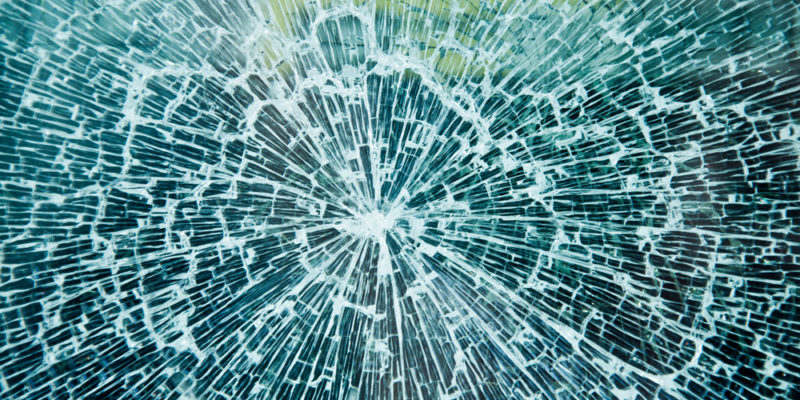Glass is a fantastic invention. It allows us to see into the outside world without having the deal with the weather, while at the same time allowing light to disperse through the interior of a building. Modern architecture wouldn’t be the same without it!
But for all of its considerable advantages, glass does have some downsides – the most obvious of which is its fragility. Without proper treatment, the delicate material has a habit of shattering into razor-sharp fragments with the slightest force.
Fortunately, the technology has come a long way over time and among the most notable improvements has been the development of reinforced, or safety glass as it’s commonly known. This is a special sort of toughened glass that’s been designed to limit the danger without compromising aesthetics. Let’s take a look at it!
What are the Different Types of Safety Glass?
Safety glass comes in several different sorts, of which two stand out as noteworthy: Laminated glass and tempered glass.
Laminated Glass
This sort of glass consists of two panels, between which sits a layer of plastic. In the event of an impact, this layer of plastic holds the fragments in place. This makes it difficult for an intruder to gain access. Also limiting the risk of accidental injury. As such, it’s ideal for settings where security is paramount.
Toughened Glass
Toughened glass is formed under special conditions. It’s heated to around 650°C before being chilled under controlled conditions. This results in a difference in tension between the outside and interior of the panel: the outer layers are squashed while the interior is stretched. This results in a glass that’s much stronger than usual.
Toughened, or ‘tempered’ glass panels are thus widespread in commercial settings. When they shatter, the tension between the interior and exterior causes the panel to crumble into tiny blunt chunks rather than large jagged shards, significantly reducing the chances of injury.
Another variety of safety glass is ‘Georgian wired’. This is constructed in much the same way as laminated glass, except that the interior panel holding everything in place is a wire mesh rather than a transparent plastic sheet. Georgian wired glass is weaker than other varieties, because the wires impinge upon the structure of the surrounding glass, weakening the panel. As such, it’s rarely used today, and serves as a historical curiosity.
Where Should Safety Glass Be Used?
There are several places where safety glass is mandatory. These include safety-critical locations like car windscreens. After all, collisions are unpleasant enough without adding flying shards of glass to the mix. But you’ll also find safety glass panels in museums, shops, glass tables, telephone boxes, bus shelters and fishtanks.
In buildings, safety glass is mandatory in certain places, these are called ‘critical areas’. Critical areas include:
- Glazed door less than 1500mm from floor level.
- Any glazed area in a window less than 800mm from floor level.
Windows within 300mm of the door are treated as sidelights, and thus subject to the higher 1500mm limit.
Is it Possible to Cut Safety Glass?
Once toughened glass is tempered, its size and shape cannot be changed. Cut into it and you’ll cause it to shatter into thousands of tiny opaque chunks. While it may be possible to remove a few millimetres from the edge of a piece, this could cause the tempered glass to weaken and ultimately break later down the line. The best solution is to get the glass cut-to-size from the very beginning. Fail to do this, and the chances are that your project will be needlessly delayed.
Laminated glass, on the other hand, can be cut. But it’s a job that requires precision and skill. You’ll need to score the glass on either side before gently moving the panels until they snap along the line. If this sounds a little risky, then it’s probably a better idea to bring a professional in to do the job.
Can you Drill Safety Glass?
Toughened glass is as impossible to drill as it is to cut: it will shatter as soon as the pressure within the glass reaches tipping point. In the case of untampered, laminated glass, two holes must be made on either side of the pane to stop chip marks emanating from the ‘exit wound’ as the drill passes through.
Will Safety Glass Shatter?
One of the major advantages of safety glass is that it will shatter evenly into small pieces, each of which has fewer sharp edges than those that result from a standard window breaking. Businesses prefer it for reasons of liability – if a display case is made from safety glass, it’s far less likely to injure a customer who trips and falls into it.
It’s worth noting that not all shatter-marks are the same. This is especially so in the case of laminated glass. Edge damage which occurs during manufacture, or during a poor installation, will spread to form a visible crack over the course of months or years. For this reason, it’s worth paying the little bit extra required to get the window professionally installed.
Can Safety Glass be Recycled?
When safety glass does break, it tends to be slightly more difficult to recycle than standard windows, which in turn are more difficult to recycle than, say, glass bottles. This is because the glass has a different melting point, and thus is more difficult to separate into usable raw materials.
Don’t chuck it in with the rest of your recycling. Instead, look for a specialist facility, and ask whether they can take the glass off your hands.
Conclusion
So, what have we learned? Safety glass comes in several different sorts to suit a range of purposes. If you’re shopping for a ground-floor door or window, then the chances are that you’ll need toughened (or ‘tempered’ glass). This will shatter into tiny blunt pieces rather than large sharp ones. Proper manufacturing and installation methods will reduce the likelihood of cracks developing after the glass is in place.

